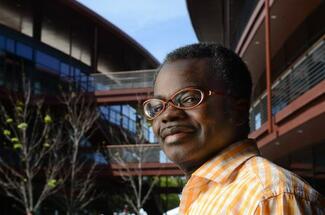
Kwabena Boahen featured in Stanford Engineering magazine
Kwabena discusses his path to Stanford, and how students can get started on their own journeys.
Professor Kwabena Boahen shares his journey to electrical engineering and bioengineering.
In this interview, he credits his father, a professor of African history at the University of Ghana, for his interest in academia and his intuition for thinking there must be a more elegant way to bridge neurobiology, medicine, electronics and computer science to design circuits.
Today Kwabena's lab focuses on how cognition arises from neuronal properties. They're using silicon integrated circuits to emulate the way neurons compute, linking the seemingly disparate fields of electronics and computer science with neurobiology and medicine. They're profoundly shifting computing away from a traditional, sequential, step-by-step paradigm toward a parallel, interconnected architecture that works much more like that of the human brain.
Kwabena's group's contributions to the field of neuromorphic engineering include a silicon retina that could be used to give the blind sight, a self-organizing chip that emulates the way the developing brain wires itself up, and a mixed analog-digital hardware platform, Neurogrid, that simulates a million cortical neurons in real time – rivaling a supercomputer while consuming only a few watts.
Excerpted from "Kwabena Boahen: Curiosity is the way forward to new knowledge," School of Engineering, January 25, 2022